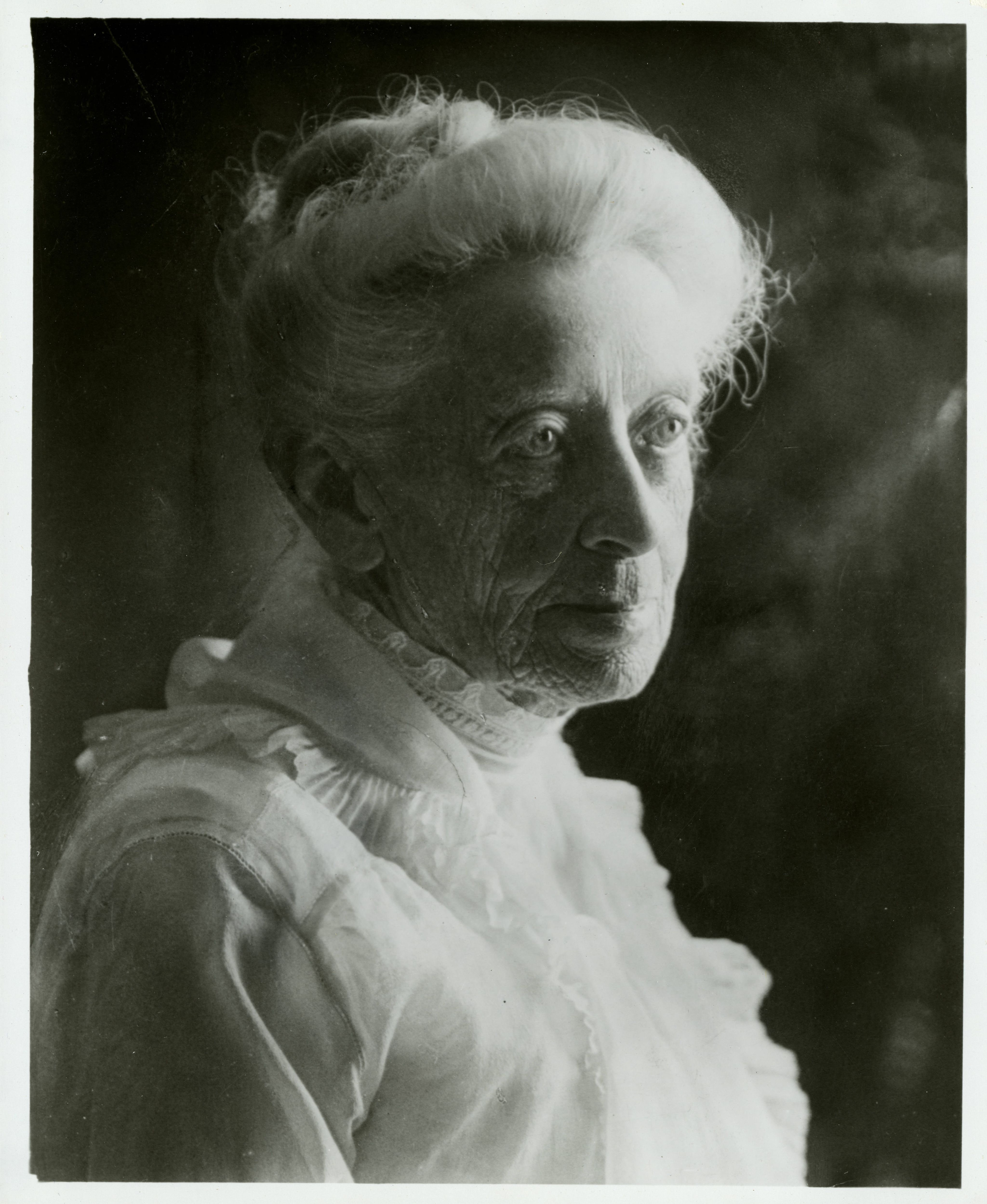Ellen
Browning
Scripps
1836-1932

You may know her name from a college sweatshirt, a San Diego oceanography institute, or a national spelling bee.
But you may not know the extent of her influence— not just in Southern California, but also in the wider scope of the United States.
This is the story of
Ellen Browning Scripps: a life of philanthropy, feminism, and an unwavering commitment to community.
Born in London on October 18, 1836, Ellen Browning Scripps grew up with many siblings. In 1844, her family, led by her father James Mogg Scripps, moved from England to the United States, settling on a plot of land that he had purchased in Rushville, Illinois.
An avid reader, Ellen received a well-rounded education and graduated high school in Rushville. In 1856, she began to attend Knox College in Galesburg, Illinois, one of the few institutions that admitted women at the time, graduating in 1859 with honors in mathematics.
Detailed receipt of payment by Ellen B. Scripps in the Female department of Knox College, signed by L. Gary, April 15, 1858.
Detailed receipt of payment by Ellen B. Scripps in the Female department of Knox College, signed by L. Gary, April 15, 1858.
In college, Ellen supported many Republican ideals and social movements, including feminism, abolitionism, and temperance. Her progressive attitude towards society and change would continue to define her contributions and values throughout her life.
When the Civil War erupted in 1861, 25-year-old Ellen was determined to support the war effort for abolitionism, becoming the secretary of Rushville's "Soldiers' Aid Society," an organization comprised of mostly women who worked to provide first aid supplies to Union soldiers. Her willingness to do volunteer service work and fight for her progressive values was contagious and inspiring, mobilizing many other women to fight alongside her— all the while working as a teacher in a one-room schoolhouse to support her family.

Documents detailing the history and origins of the Detroit Evening News, undated.
Documents detailing the history and origins of the Detroit Evening News, undated.
In 1865, Ellen Browning Scripps left Rushville and started a career in journalism in Detroit.
At the time, her older brother James E. Scripps managed a newspaper office known as Advertiser and Tribune, where Ellen worked as a writer and copyeditor. Only a few years later, in 1873, the two of them developed their first family-owned newspaper: the Detroit Evening News, where she published a column known as the "Miscellany," featuring an eclectic collection of short stories.
Ellen helped her younger brother, Edward Willis "E.W." Scripps, manage a second family-owned newspaper: the Cleveland Press, founded in 1878. Both E. W. and James continued to grow their newspaper companies across several states in what would become a family feud over control of their businesses. Though the brothers' rivalry escalated fiercely, Ellen remained supportive of E.W.'s efforts.
A letter from Ellen B. Scripps to E. W. Scripps, May 27, 1880.
A letter from Ellen B. Scripps to E. W. Scripps, May 27, 1880.
As one of the few female journalists active in the field at the time, Ellen sought to provide opportunities for women in the industry. With her connections and experiences, she urged E.W. to hire younger women to write for the newspapers— especially as she intended to take a break from journalism.
From 1881 to 1888, Ellen and E.W. Scripps left Detroit to travel around the world.
While abroad in various locations across Europe, Africa, and the Middle East, Ellen documented her travels in weekly letters that were published in the Evening News and Cleveland Press.
Ellen Browning Scripps' trunk repair receipt, 1881.
Ellen Browning Scripps' trunk repair receipt, 1881.
Her travel letters depicted everyday life in different cultures of countries, offering a taste of her experiences abroad to many readers in the United States. Ellen's articulate writing skills allowed her to spark others' imaginations of distant places, from well-known landmarks to small villages.
When she returned to Detroit in 1889, the preexisting tension between James and E.W. resulted in the latter's removal from control of the newspaper businesses. The family feud compelled Ellen to move elsewhere; she proceeded to travel to Southern California, to which she would devote the rest of her life.
La Jolla, San Diego
California

Ellen Browning Scripps was quickly drawn to San Diego when she first visited in 1890. The Southern California city's favorable coastal climate and access to transportation made it a location of great economic potential.
Photo from Ellen Browning Scripps' first time in La Jolla.
Photo from Ellen Browning Scripps' first time in La Jolla.
In 1896, after traveling between Michigan and California for five years, she decided to stay in San Diego.
A few of her siblings came with her to Southern California. Ellen stayed with her younger sister, Virginia, while her younger brother, E.W., resided in Miramar.
With the copious amounts of money she earned from investments in the Evening News and other family-owned papers, Ellen bought a piece of land in La Jolla, San Diego and built her own home— South Molton Villa, a large house overlooking the Pacific Ocean.





Ellen quickly became involved with La Jolla's tightknit community, devoting her time to improving the lives of those around her.
She turned to her wealth and began a new stage of her life: philanthropy.
For further reading:
McClain, Molly. Ellen Browning Scripps: New Money and American Philanthropy. Univ. of Nebraska Press, 2017.
“Ellen Browning Scripps 1836-1932, Journalist, Humanitarian, Educator.” The Claremont Colleges Digital Library, ContentDM, ccdl.claremont.edu/digital/collection/p15831coll3.










